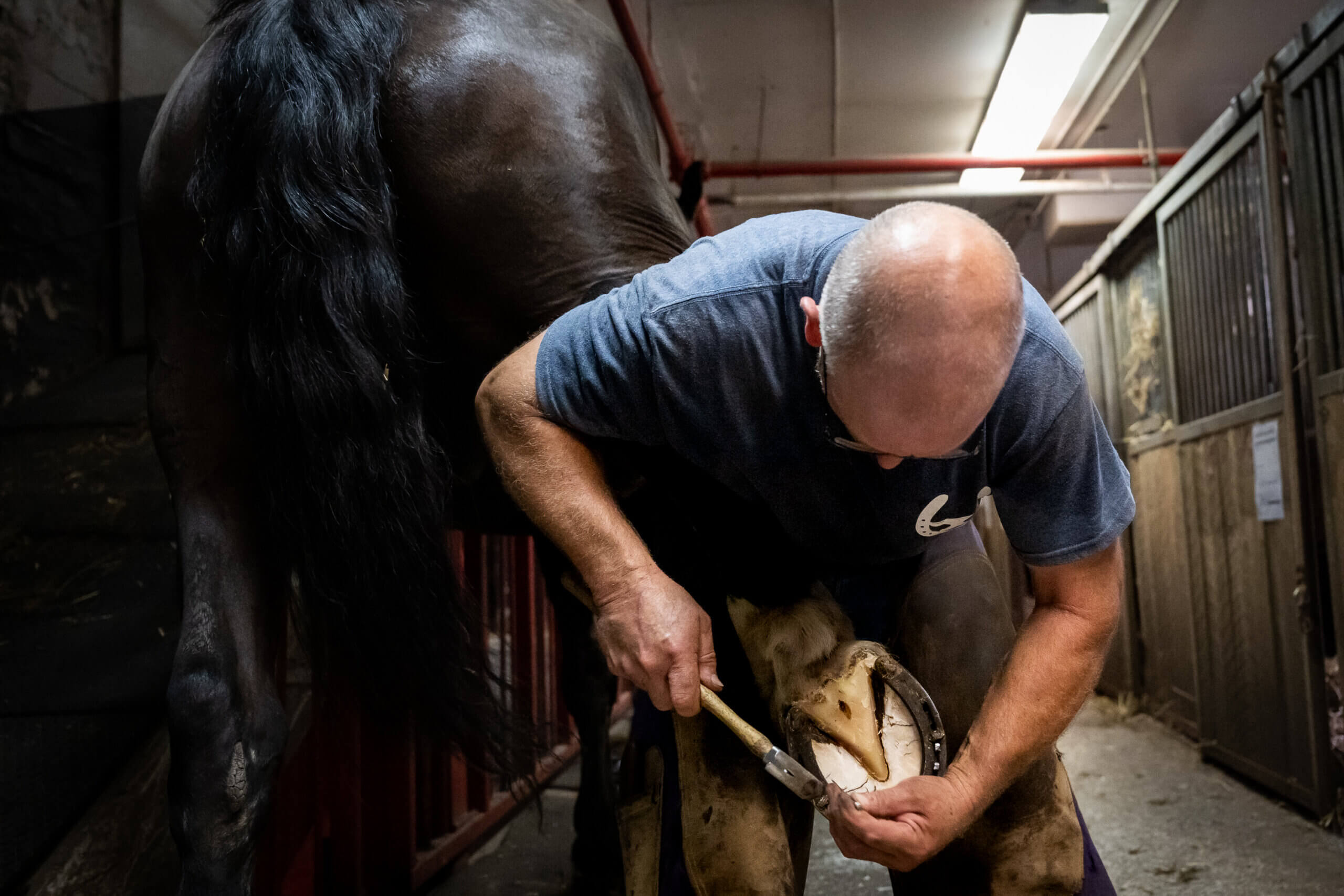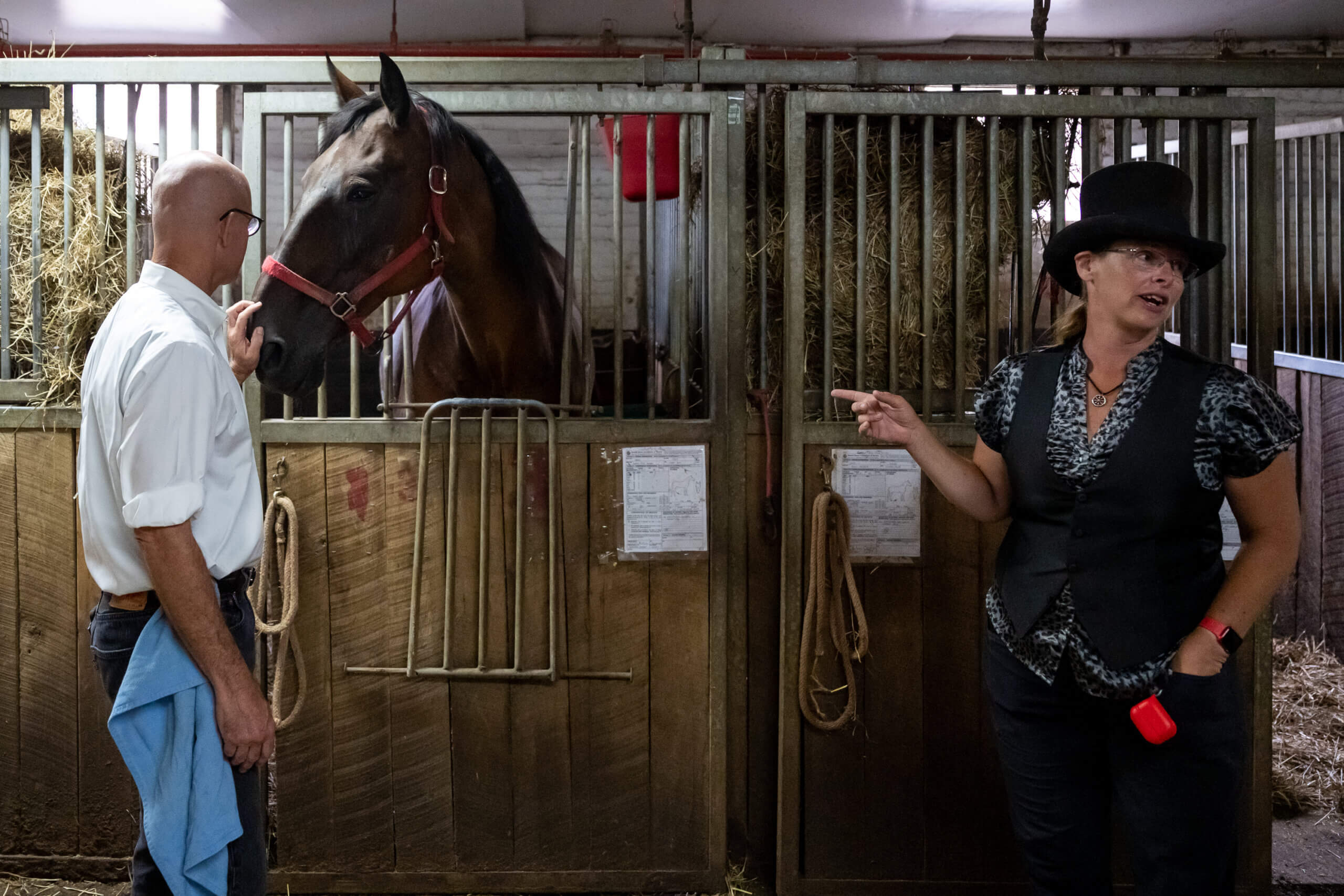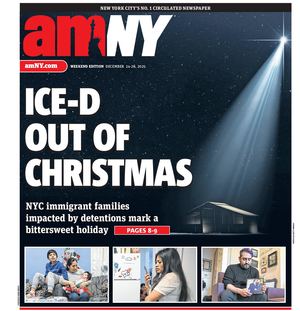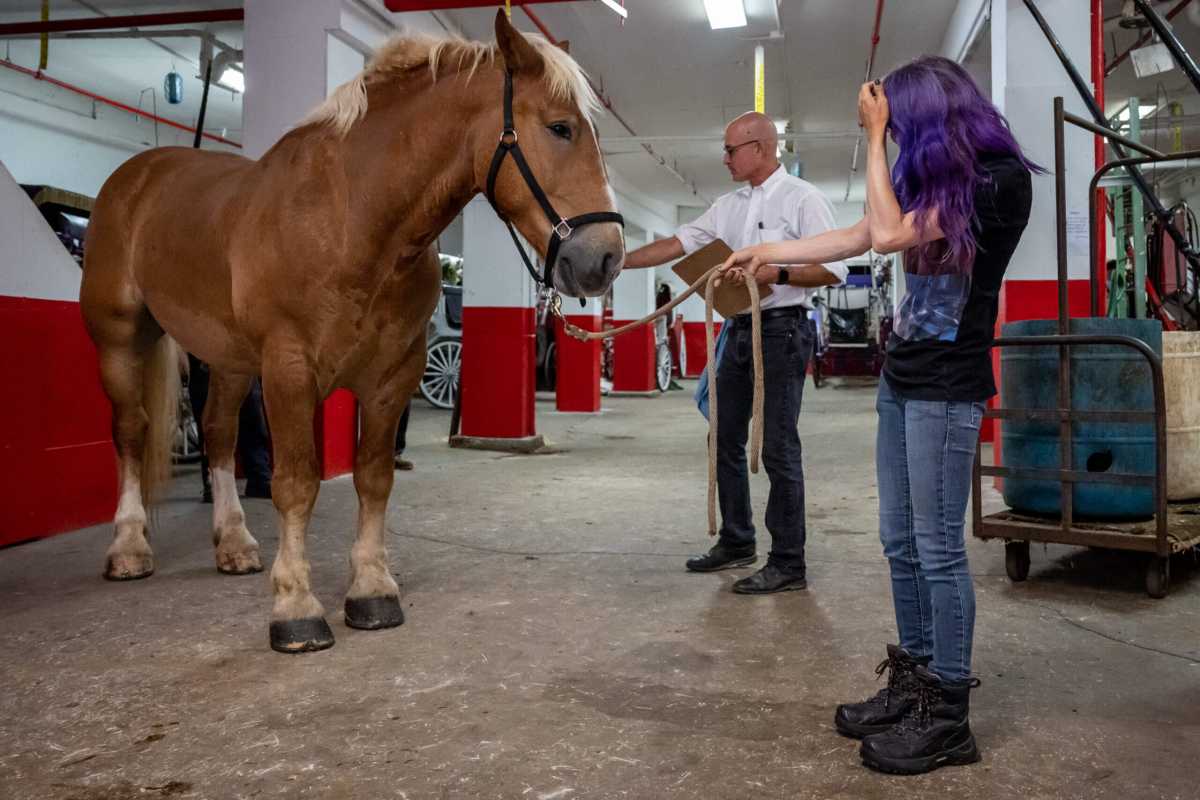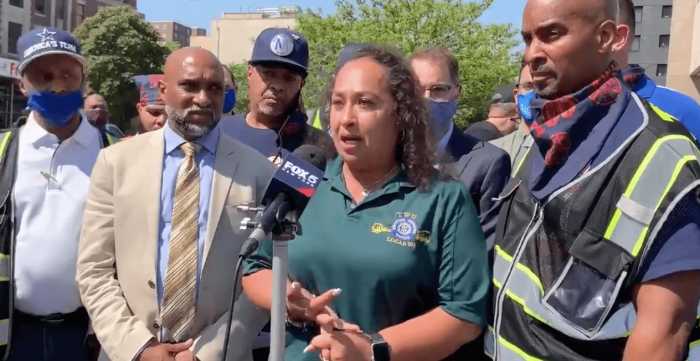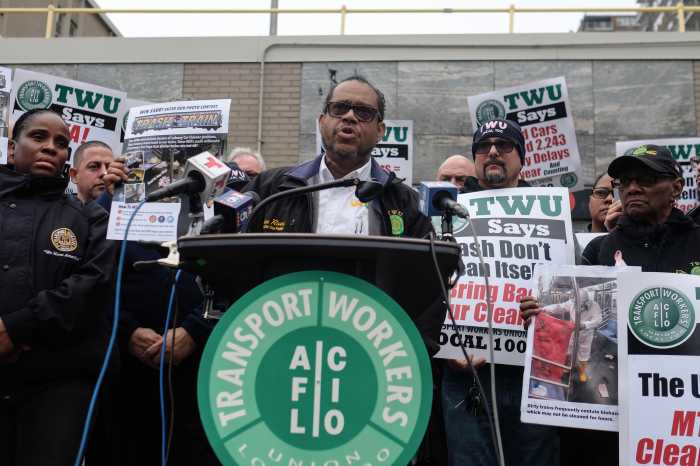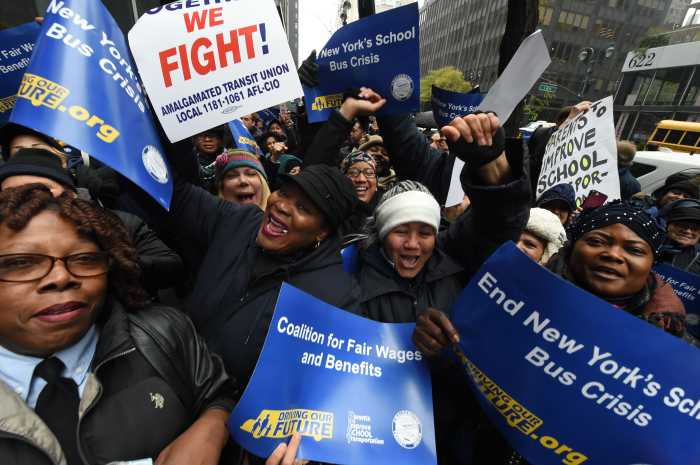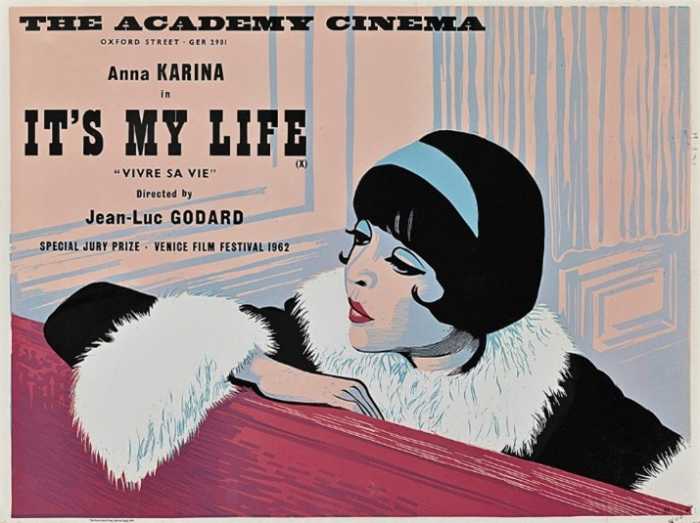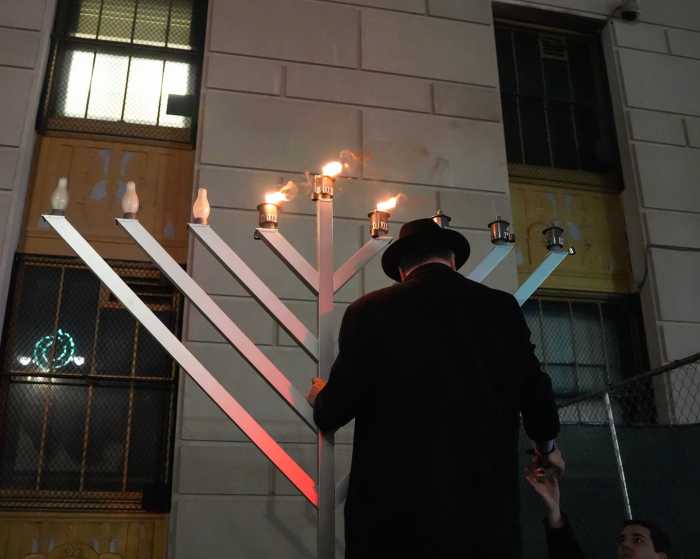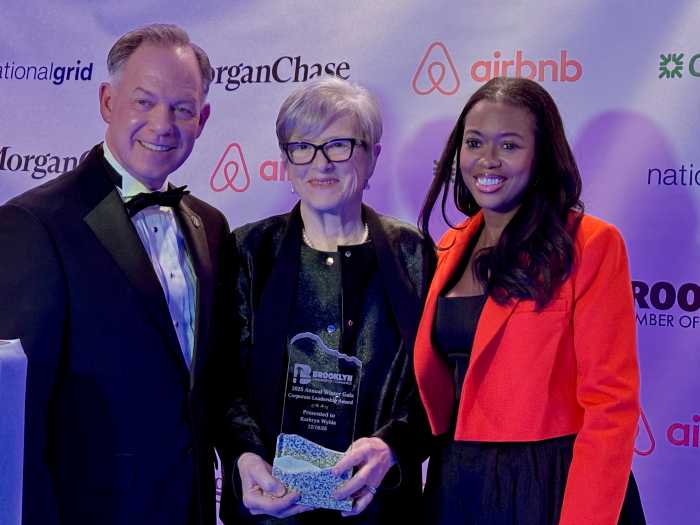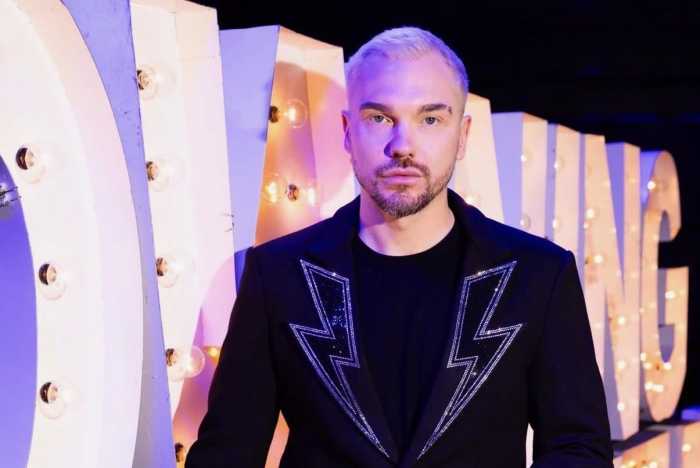This is the first story of a two-part series about steps TWU Local 100 and the horse carriage industry have taken to further the well-being of NYC carriage horses.
The horse carriage industry has been under immense scrutiny from animal rights activists for years, with its critics arguing the industry is fraught with animal abuse.
The barrage of criticism, however, has grown since the collapse of a carriage horse called Ryder on the streets of New York last year, which led to the industry’s opponents pushing for the passage of Intro #573 that would ban horse carriages and replace them with electric carriages if it becomes law.
In response to its critics, the Transportation Workers Union (TWU) Local 100, which represents the horse carriage drivers, created the “Carriage Horse Welfare Initiative” last year, setting new standards for equine veterinary care, among other measures.
amNewYork Metro visited the Clinton Park Stables on West 52nd Street to speak to horse carriage drivers and equine veterinarian Dr. Gabriel Cook.
Cook, who is a partner at the New England Equine Practice in Patterson, NY, became the lead veterinarian for most of New York City’s horse carriage drivers and owners in August 2022. He is a staunch advocate of the 150 horse carriage drivers, most of whom are working-class immigrants, debunking accusations that they don’t care about the welfare of their animals.
During the interview with amNewYork, Cook stopped to point out the interaction between a horse called Scout and its owner, carriage driver Jill. Scout, a handsome Belgian horse, was new to the stable and waiting for his exam.
“I’m watching the whole time. I’m looking at [Jill] smiling the whole time, kissing the horse on his nose, trying to fit it for his bridle right now,” Cook said. “I mean, this is going to become a family member here in about 20 minutes. She’d lay in the street for this horse right now, and she’s going to do everything she can to keep it healthy and happy.”
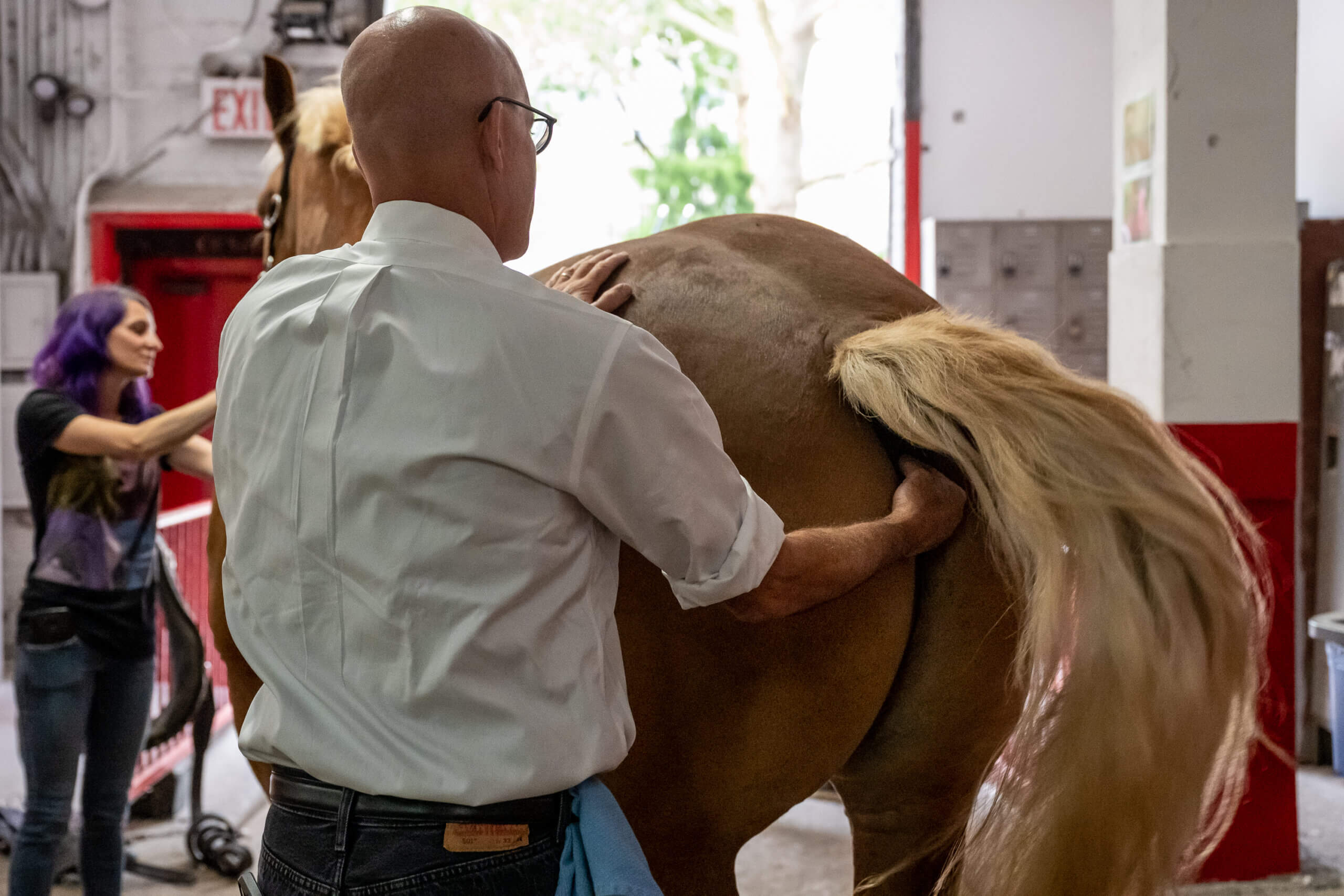
The horse carriage drivers say that their critics have tried to demonize their entire industry through a constant barrage of animal abuse accusations on social media and sometimes via personal attacks.
“The notion that 150 people came together in New York City, all of them to abuse horses, is preposterous,” Pete Donohue, director of press and media relations for TWU Local 100, said.
Conor McHugh, carriage owner, driver, and manager of the stable, said what happened to Ryder “was terrible” but vehemently pushed back on allegations of widespread horse abuse and debunked the notion that carriage drivers were “horrible, nasty people to the horses.”
“Meanwhile, [the carriage drivers] meet the public every day with their horses, and everybody who rides in the carriage would say, ‘God, they’re so nice. We had so much fun. It was such a pleasure,'” McHugh said. “How can these two people supposedly exist? This terrible person who would like to hurt these horses meets the public daily, and the public loves them.”
Cook and McHugh said horses get sick just like humans and other animals.
“It’s not if they’re gonna get sick; it’s when they’re gonna get sick,” Cook said. “But the question is, ‘what are we going to do about it when they get sick?’ And that’s what we’re doing.”
Cook also provides telehealth. Furthermore, if the issue can’t be resolved on-site, horses can be treated at his 24-hour clinic.
“I’m probably on the phone with somebody every single day regarding some potential medical issue,” Cook said.
Cook shared how McHugh took his horse Katie to the clinic because she wasn’t responding to regular treatment and said McHugh looked shaken and nervous because his horse was sick.
“There is a bond,” Cook said of McHugh’s relationship with his horse.
“I don’t know who you would have to be to be okay with your horse being sick and in distress,” McHugh said. “You know, I mean, it just doesn’t make sense.”
Cook and his team visit the stables every two weeks for city-mandated physical exams. Afterward, he consults with the drivers and walks through the stables, checking the horses for unusual behavior.
Cook walked amNewYork Metro through the exam of Scout and another new horse, Nelda.
All horses are examined twice a year—with one exam including vaccines and a test for Coggins, a blood test checking for Equine Infectious Anemia.
The exam includes a rectal temperature check and an eye and dental exam, which also determines the approximate age of the horse.
With a stethoscope, Cook listens to the heart, lungs, and stomach, as well as checks their tendons and notes their white markings.
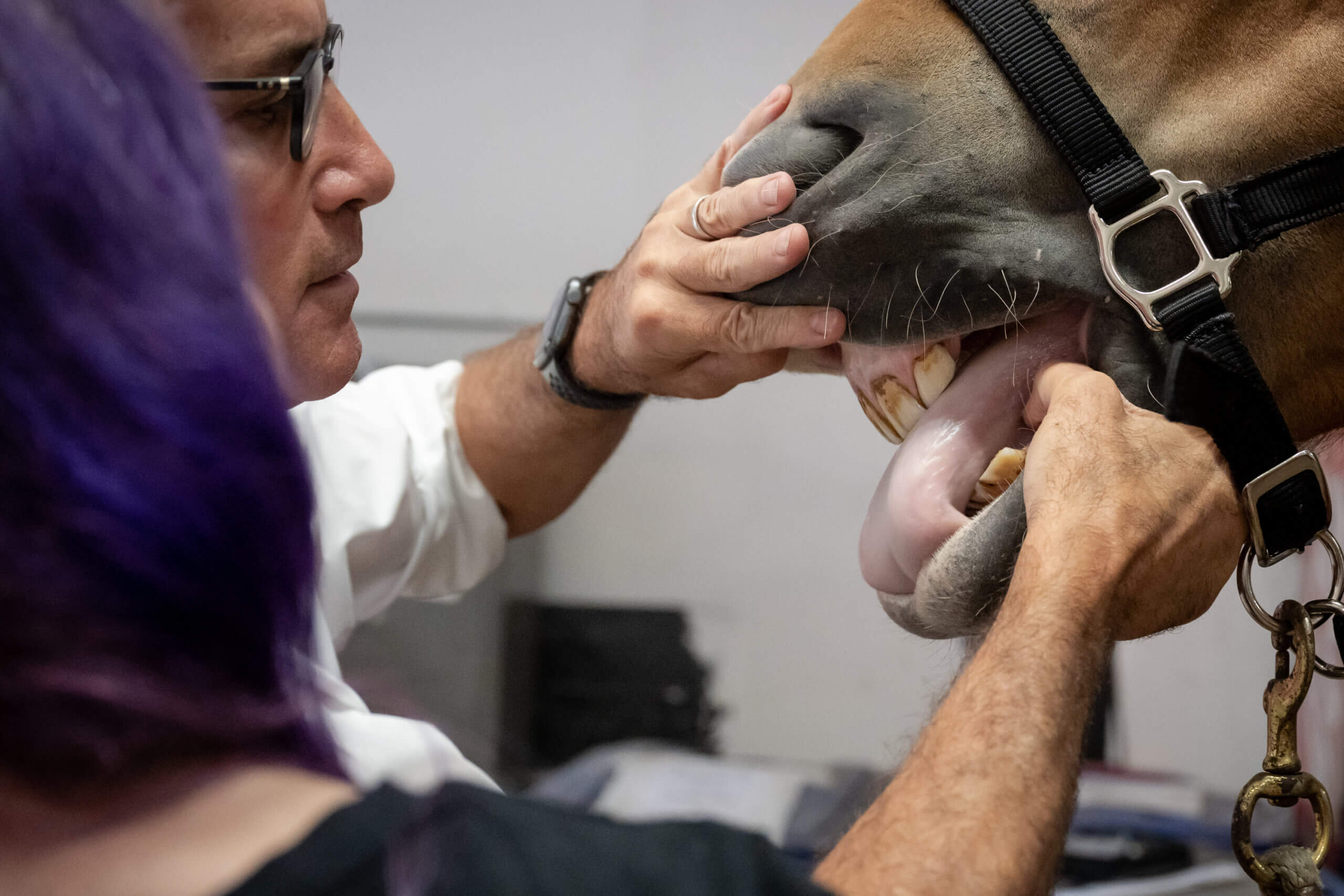
Cook has made the city-mandated physicals more rigorous, adding a “trotting” exam when he took over the vet care 11 months ago. He explained that many lame horses don’t limp while walking.
“But when you trot them, when you run them a little faster, you absolutely can see [the horse] limp,” Cook said. “So, before we sign off on any paperwork, they trot.”
All results are meticulously noted on the Rental Horse Certificate of Health the owners must submit to the NYC Department of Health & Mental Hygiene (NYC DOHMH). Cook emphasized that he does not sign off on any horse that doesn’t pass the exam.
“We’re trying to provide a standard of care and with full transparency,” Cook said.
Nelda had visible bite marks from other horses on her shoulder and barrel. Cook recommended cleaning the bite marks with medicated soap.
He was concerned that animal rights activists, who regularly record and report horses they claim are injured and abused, would create a stir once Nelda took to the streets.
“I just want to point it out because this is a perfect opportunity if someone wants to sensationalize something, they can create a story that makes it look like the horse was being abused,” Cook said. “And nothing like that happened.”
In the meantime, blacksmith Aaron ensured that carriage horse Charlie’s hooves were in shape, cleaning and trimming them before attaching the horseshoe.
Christina Hansen, a carriage driver and chief shop steward for TWU Local 100, explained that the horses see a blacksmith every 4-6 weeks depending on the animal’s hoof growth.
“This is how you keep the horses healthy and sound. It’s all part of the routine maintenance,” Hansen said.
The second part will include more details about TWU’s “Carriage Horse Welfare Initiative,” including an interview with Tristan Aldrich, an expert horse trainer who has worked at the royal stables at Buckingham Palace in London, the financial impact #INTRO 573 would have on drivers, and what they believe is behind the push to abolish horse carriages in NYC.
